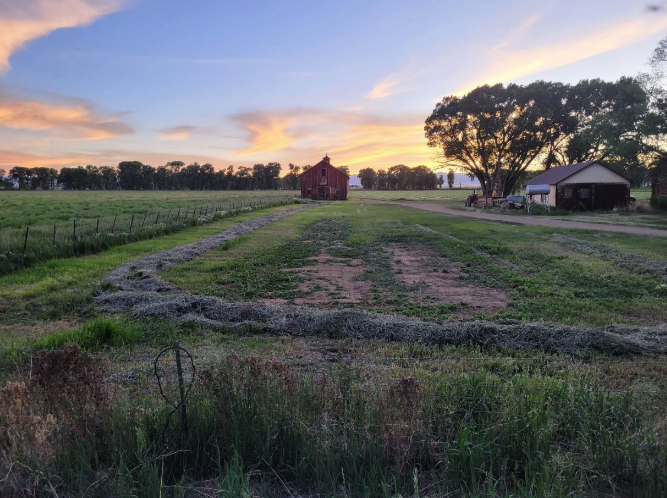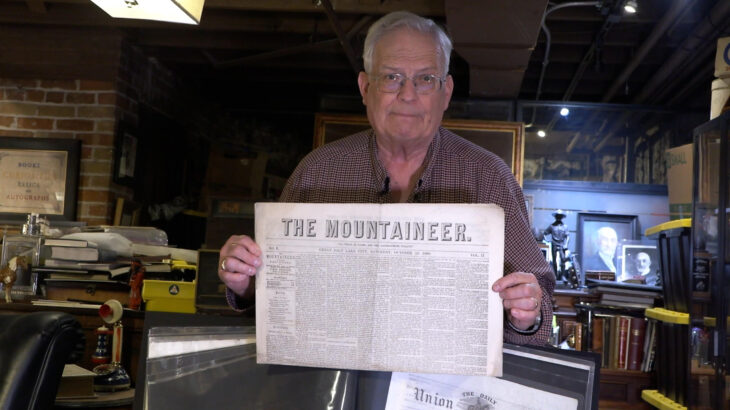Linda Petersen
Mormon Pioneer National Heritage Area
801-554-7513
Email: linda@bpmedia.com
FOR IMMEDIATE RELEASE: Sept. 11, 2015
Jewish community of Clarion to be memorialized in Gunnison
Gunnison, Utah (Sept. 11, 2015) — Residents of Gunnison Valley are pleased to memorialize an almost forgotten piece of Jewish history in Utah.
What: Clarion historic marker unveiling and program
Where: Legacy Plaza, Main & Center Streets, Gunnison
When: Friday, Sept. 25, 6 p.m.
The story of the ill-fated Jewish Agricultural and Colonial Associati on’s agricultural colony in Clarion, five miles southwest of Gunnison, will be summarized in a historic marker on Gunnison’s Legacy Plaza. The historic marker will be unveiled on Friday, Sept. 25 at 6 p.m.
“The colonization of Clarion was an important part of the history of Gunnison Valley. The Clarion Legacy Kiosk, placed in Gunnison’s Legacy Plaza, will recognize that contribution and stand as a lasting tribute to the courage and determination of the Jewish people of Clarion,” said Lori Nay, former mayor of Gunnison who helped orchestrate the project.
The ceremony will include original music from the Clarion Centennial Pageant of 2011 performed by Clive Romney of Utah Heritage Arts, remarks by dignitaries and refreshments.
Speakers will include Gunnison Mayor Bruce Blackham, Councilman Robert Anderson, Jerry Klinger (Jewish American Society for Historic Preservation), Monte Bona (Mormon Pioneer National Heritage Area) and Dr. Robert A. Goldberg, (author of “Back to the Soil: The Jewish Farmers of Clarion, Utah, and Their World”).
Artist rendering of kiosks to be unveiled Sept. 25 in Gunnison. –
2 –
In 1911, Benjamin Brown and 11 other Russian Jewish immigrants arrived in Utah as part of a national movement among Jews to return to the soil. Brown and other community leaders had purchased property from the Utah State Board of Land Commissioners after being disappointed by high land prices in New Mexico and Colorado.
At the turn of the century the Jewish immigrant population in New York and Philadelphia was looking for a way out of the poverty-filled tenements. Brown and others hoped a return to the land would free Jews from the poverty of the cities and allow them to be self-reliant. The Clarion colony was one of 40 that sprang up across the U.S. around that time.
Brown and association partner Isaac Herbst had purchased a 6,000-acre parcel of land with water rights for $69,000, with 10 percent down and a 10-year balance. The 5-mile-long-by-3-mile-wide property was a half mile from the Sevier River and close to the expected route of the future Piute Canal.
They were led to believe that it was “choice, arable land,” but soon discovered that it was instead clay-based and difficult to cultivate. Still they moved forward, planting oats, corn, alfalfa and wheat.
Over the next five years, the colony, which they named Clarion, struggled to survive. More immigrants arrived, and the community grew to 200 people. But the colony was doomed from the start.
Just two of the colonists had any farming experience. The community lacked sufficient water for the crops, even when the promised Piute Canal was brought out to Clarion. When they built a cistern to store water for livestock it collapsed because it had been improperly constructed.
The first-year crops were so meager that the community could not make its loan payment, but Brown and got an extension from the state, a loan from the Gunnison Bank and $5,000 from Utah Colonization Fund bonds purchased by Salt Lake City’s Jewish population, along with $2,000 in donated lumber.
That kept the colony going, but extreme weather conditions took their toll. The colonists, who had been led to believe that the climate in Sanpete County was temperate, were surprised by heavy snowfall the first winter, subsequent heavy summer storms and runoff, and the area’s short growing season.
Neighboring Mormon farmers greeted the colonists with a welcoming dinner, and over the life of Clarion, shared harvesting and threshing chores. They shared the drought years too, but being accustomed to local conditions, the Mormons had an easier time.
At a 2011 Clarion reunion, Allen Frandsen of Centerfield speaks with former Clarion resident Lillian Brown Vogel, who was 102 at the time. Clarion was the daughter of the settlement’s founder, Benjamin Brown. Vogel lived in Clarion until she was five years old.
The challenges facing Jewish settlers who came to Clarion in the early 1900s with virtually no farming experience were many, and, to honor their perserverance, a memorial plaque will be unveiled on Friday, Sept. 25, in Gunnison. –
3 –
In November 1915, the State Land Board foreclosed on the Jewish property and most residents were forced to leave Clarion. Most returned to the East but several remained in Utah as farmers, entrepreneurs, and merchants. Benjamin Brown, for example, founded Utah Poultry Producers Coop which became Norbest and IFA, and Maurice Warshaw established the Grand Central stores in Salt Lake City.
Despite the hardships, many of the colony’s families retained positive memories of their experiences in Clarion that have been passed along to their descendants.
Utah author Eileen Hallet Stone wrote a telling and touching story about Clarion in “Legends, Lore and True Tales in Mormon Country,” published by The History Press. She concludes her chapter with this insight: “Today, Clarion is a fragment of history. Its land still lies fallow. But the memories of Jewish farmers adapting to a new world, learning a new language, taking great risks and earning a new life remain miraculously intact.”
Mormon Pioneer Nati onal Heritage Area Director Monte Bona said, “The Mormon Pioneer Nati onal Heritage Area keeps those memories alive by establishing a memorial to the brave Jewish pioneers who gave their all in the pursuit of a Utopian dream. May that dream never die in the hearts of their descendants and all people who honor the courage, faith and hope of those who dare to do great things even when failure looms. Picking up, starting over, learning and moving on to new horizons and new experiences constitute the essence of what it took to colonize the West.”
The historic marker pays tribute to all the colonists, to their courage, strength and determination, and to their lasting impact on Gunnison Valley and Utah.
For more information, contact MPNHA Director Monte Bona at 801-699-50657 or Project Director Lori Nay.
###
The Mormon Pioneer National Heritage Area includes 400 miles of glorious scenic byways, a vast array of wildlife, the best of western living cattle and sheep ranches, and colorful mountain vistas, all within a trip on Utah Heritage Highway 89.


